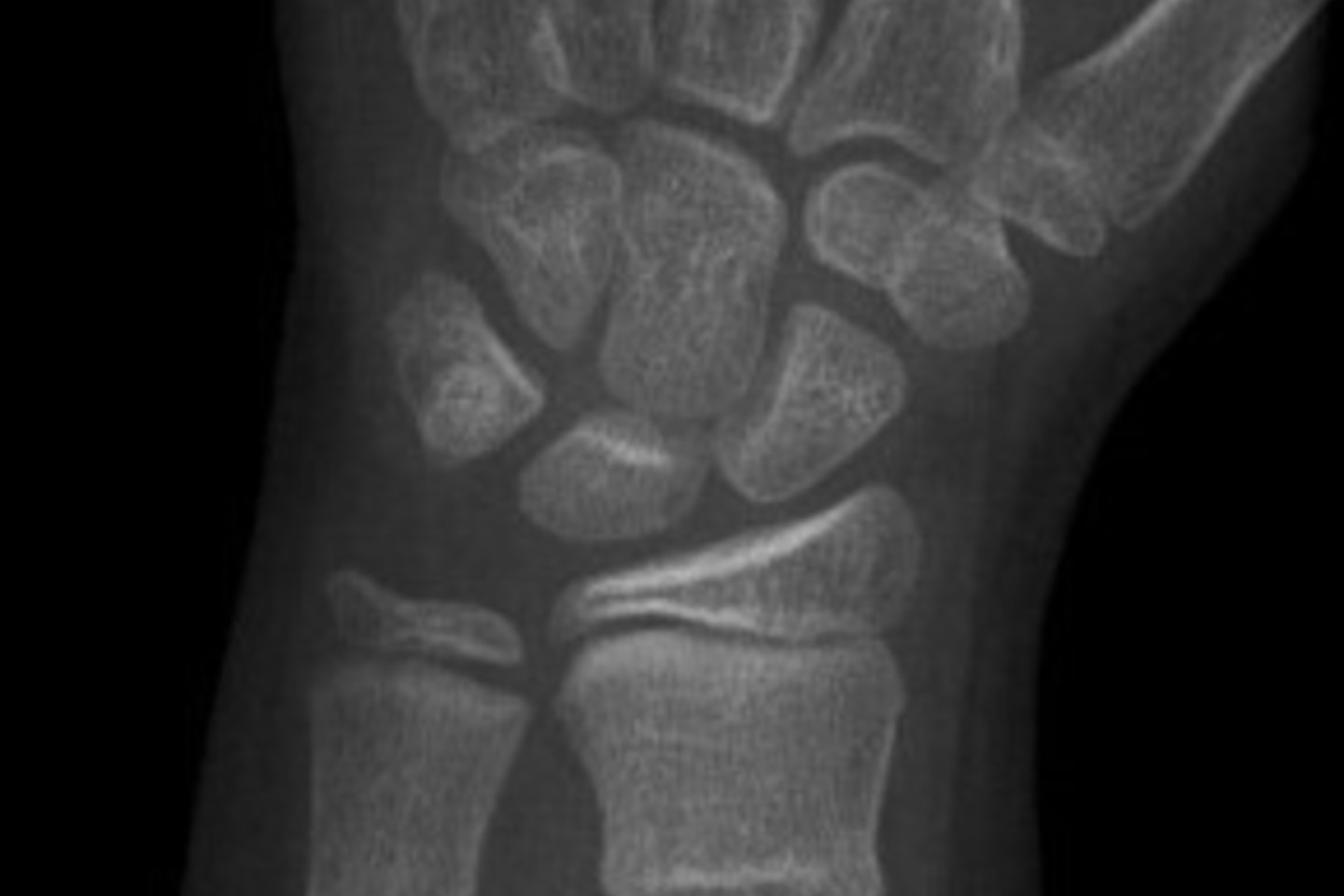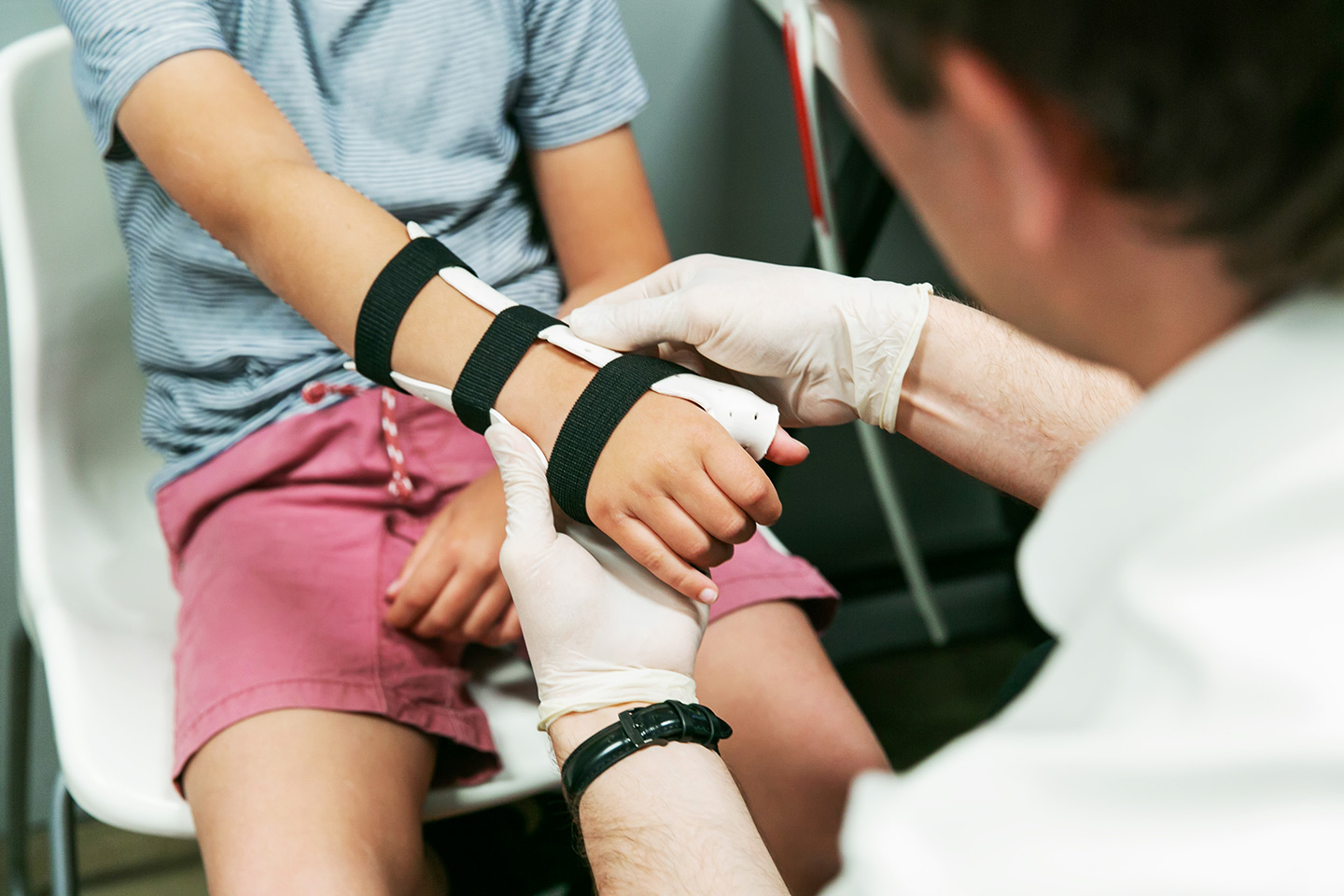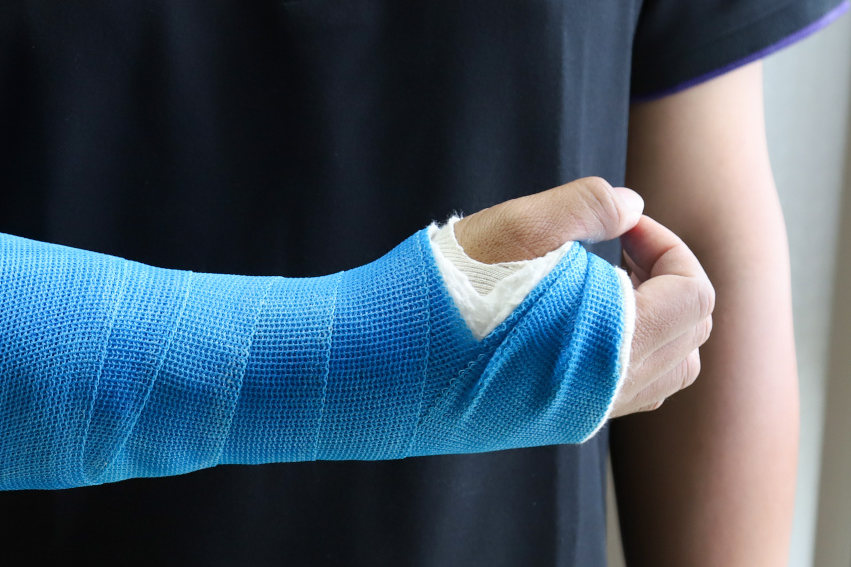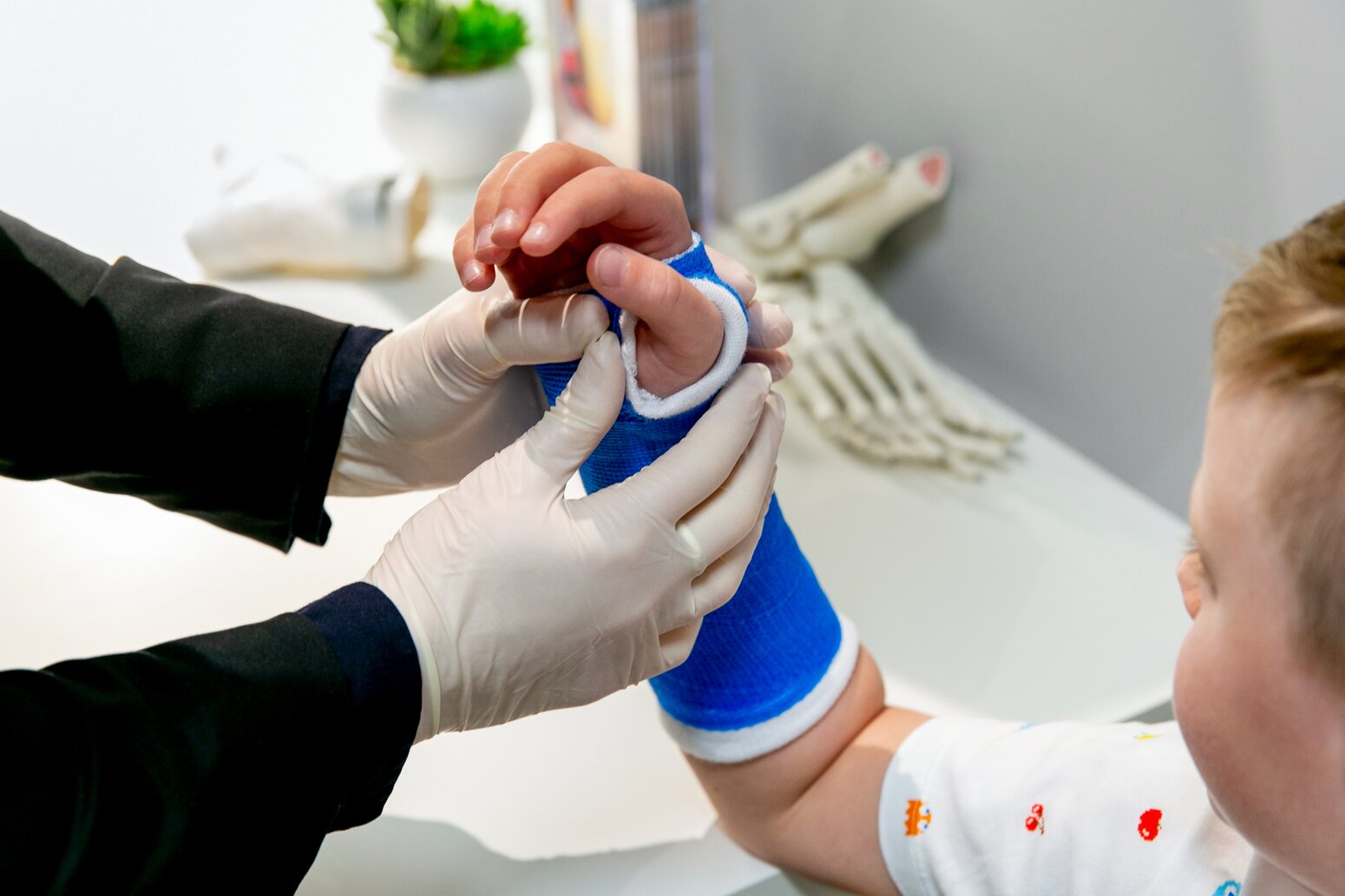Buckle Fracture Management Services
Buckle fractures are a common type of injury where an area of bone is deformed but not completely broken.
This fracture usually occurs in children, due to the flexibility of their bones.
The most common area for a buckle fracture that we see is in the forearm (radius or ulnar) most commonly down towards the distal end of the bone (towards the wrist).
Buckle fractures can, albeit rarely, occur in other parts of the human body as well, such as the leg and upper arm.
Orthotics Plus provides acute support for paediatrics who have sustained a fracture. With appropriate treatment and time, nearly all buckle fractures heal well and generally quite quickly.

Treatment of Buckle Fractures at Orthotics Plus
There are several options available for treating buckle fractures.
We make every effort to accommodate patients with acute injuries on the same day. If we are able to do so, we can create and fit the cast/splint/brace within 45-60 minutes and you can leave with the fracture support solution on the same day.
We will also provide a review and adjustment of the splint at no additional cost if necessary. However, if the patient experiences swelling, a review appointment will likely be necessary.

Wrist Hand Orthoses
Typically, a custom-made Wrist Hand Orthoses (WHO) is used for most cases. It is a splint made of low-temperature plastic that fits intimately over the wrist and closes with velcro straps which we custom-make to the patient.
This splint is often enough for treating buckle fractures, and it can be removed once a day for showering but should be worn at all other times. They are easy to re-fit after showering.
These are created out of a low-temperature thermoplastic, which helps to minimise the risk of rashes/discomfort to the patient. We provide two fabric sleeves to be worn underneath the device for comfort which can be washed.
To manufacture the thermoplastic splint, we will trace the shape of your childs arm and wrist, then cut this shape out of a sheet of thermoplastic, heat the plastic with either a water bath or heat gun, then mould the plastic to conform perfectly around their anatomy shape. When the plastic cools it sets rigidly and acts like a splint or cast which can be removed.
Once the shape has been captured we remove it from the arm, tidy all edges add the straps the instruct the patient on caring for the arm and hygiene.
Moulding the plastic over the wrist is painless, as the material softens when exposed to a low heat- similar to that of a warm bath.

Fibreglass Cast (Waterproof or Non Waterproof)
If there is a displacement of the fracture or if the child is very active and unlikely to be able to be compliant with brace wear or reducing loading through the injured area, a full fibreglass cast may be necessary. The cast can either be waterproof or non-waterproof, depending on the child’s/family’s preferences and needs.
If the child is at greater risk of falling or bumping into things, a full cast would be a preferred option to a WHO.
Symptoms
Patients with a buckle fracture may experience pain, swelling, and difficulty moving the affected wrist. The mechanism of injury is important in determining the diagnosis.
Unlike a normal fracture, there will be less instability or grinding in the wrist.
Pain on movement of the wrist is a common symptom of a buckle fracture.
How Buckle Fractures Occur
Buckle fractures occur most frequently in the upper limb as a result of a fall, landing on their wrist/hand, these are namely
- Sporting incidents
- Playground incidents
- Falling off bikes/scooters
- Trampolines
Buckle fractures generally occur due to an axial load through the bone which exceeds the strength of the bone and causes it to buckle.


Diagnosis of a Buckle Fracture
Upon sustaining an injury the patient and their family will visit a hospital or appropriate healthcare provider.
In pediatric patients, a buckle fracture is a common type of fracture, which is usually confirmed by either the emergency doctor or the radiologist.
The diagnosis is often based on the report from the radiographer. When patients come to us, they usually have already received a diagnosis from their X-ray. However, sometimes patients come in with their x-rays, and it is clear to us that they have a fracture. In cases where patients are referred to us, a diagnosis must be established before treatment can begin.
X-Rays
When reviewing a buckle fracture, a radiologist would typically see a subtle deformity in the bone where the edges of the bone curve out to one or both sides, instead of being straight. This can cause a slight bulge on the surface of the bone.
While the deformity can be very subtle, it is usually enough for the radiologist to make a diagnosis of a buckle fracture.

Difference Between a Buckle Wrist Fracture and a Standard Wrist Fracture
A buckle wrist fracture is different from a normal wrist fracture in that it occurs in long bones like the radius or ulna, where the bone compresses instead of snapping or shearing past each other.
This creates a ridge-like buckle popping up and deformation in the bone.
It is unlikely to occur in the smaller wrist bones such as the scaphoid bone due to its shape, which does not lend itself to an axial load. The scaphoid bone is more likely to shear or fracture in a different way.
A buckle fracture in the wrist is typically less severe than a full break. In a buckle fracture, the injury is usually stable and will heal on its own with the help of a cast or splint. On the other hand, a full break or a complete fracture involves a break in the bone, which can cause the bone to shift out of alignment and require more extensive treatment and/or surgery.


Contact Orthotics Plus for Buckle Fracture Support
After visiting your emergency support, you may be referred to us, or you can request to be referred to us. This can be done online via our referral form.
- You can attend Orthotics Plus on the same day as the accident
- We have multiple clinic locations throughout Melbourne
- Our staff are highly experienced with fracture management
- We will support your child with compassion and provide information regarding appropriate rehabilitation
Use our locations page to see the closest Orthotics Plus clinic to you.

Buckle Fracture FAQ
Yes. Adults can sustain buckle fractures, but they are far less common in adults than in children.
This is because children’s bones are still growing and developing, and therefore are more flexible and elastic. This means that when a child’s bone is subjected to a compressive force, such as a fall or impact, it is more likely to buckle or bend than to break completely.
In contrast, adult bones are more rigid and brittle (due to bone density and reaching maximum growth), and are more likely to break completely under the same compressive force, rather than buckle.
However, in some cases, adults can still experience buckle fractures, especially if they have weakened bones due to conditions such as osteoporosis.
The main difference between a buckle fracture and a greenstick fracture is the degree of damage to the bone.
In a buckle fracture, the bone is compressed and deformed, but there is no actual break in the bone. On the other hand, in a greenstick fracture, the bone actually breaks but doesn’t break all the way through, similar to a tree branch being bent and partially snapped.
The bone is typically still intact on one side, while the other side is bent or buckled. Greenstick fractures are more severe than buckle fractures, but less severe than complete fractures where the bone breaks all the way through.